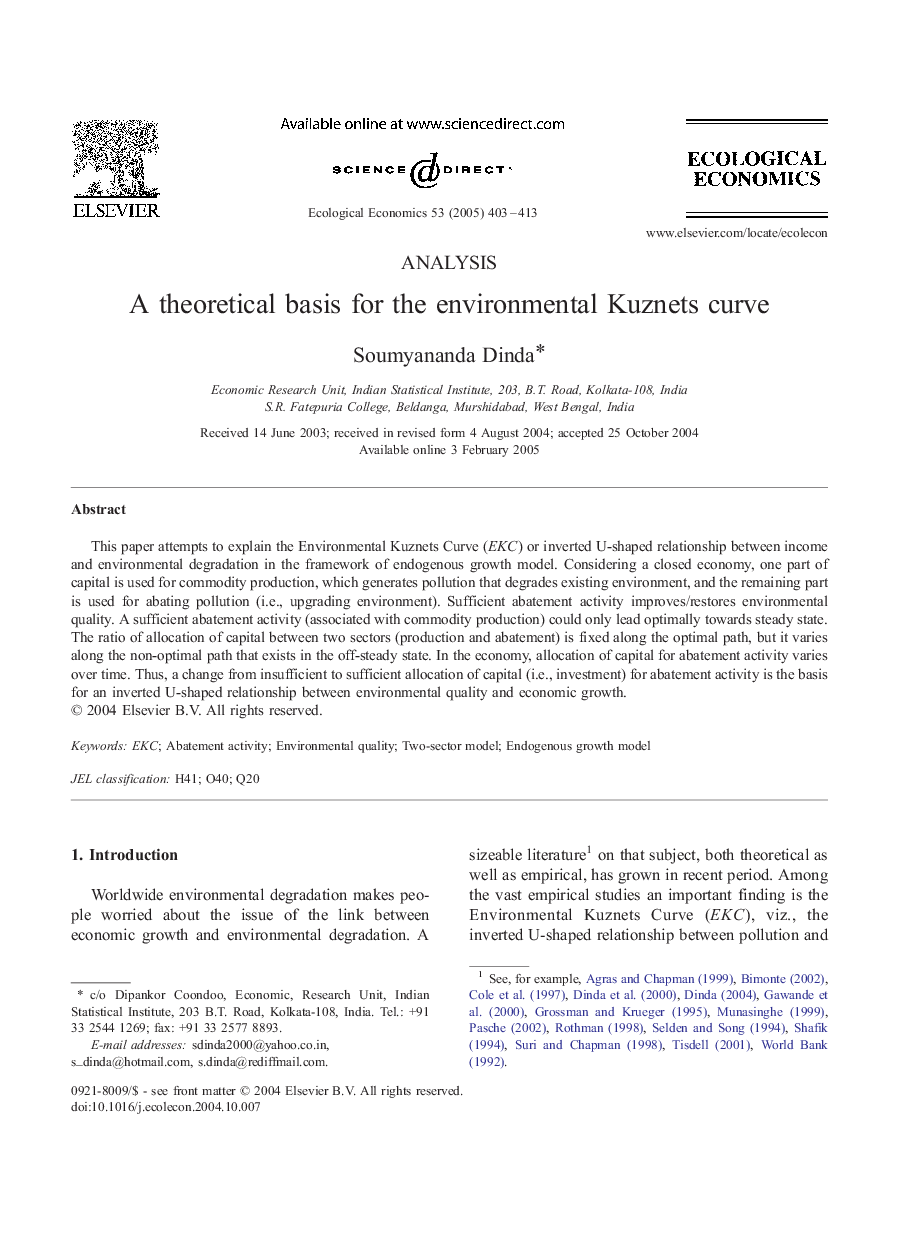| Article ID | Journal | Published Year | Pages | File Type |
|---|---|---|---|---|
| 9547739 | Ecological Economics | 2005 | 11 Pages |
Abstract
This paper attempts to explain the Environmental Kuznets Curve (EKC) or inverted U-shaped relationship between income and environmental degradation in the framework of endogenous growth model. Considering a closed economy, one part of capital is used for commodity production, which generates pollution that degrades existing environment, and the remaining part is used for abating pollution (i.e., upgrading environment). Sufficient abatement activity improves/restores environmental quality. A sufficient abatement activity (associated with commodity production) could only lead optimally towards steady state. The ratio of allocation of capital between two sectors (production and abatement) is fixed along the optimal path, but it varies along the non-optimal path that exists in the off-steady state. In the economy, allocation of capital for abatement activity varies over time. Thus, a change from insufficient to sufficient allocation of capital (i.e., investment) for abatement activity is the basis for an inverted U-shaped relationship between environmental quality and economic growth.
Related Topics
Life Sciences
Agricultural and Biological Sciences
Ecology, Evolution, Behavior and Systematics
Authors
Soumyananda Dinda,
